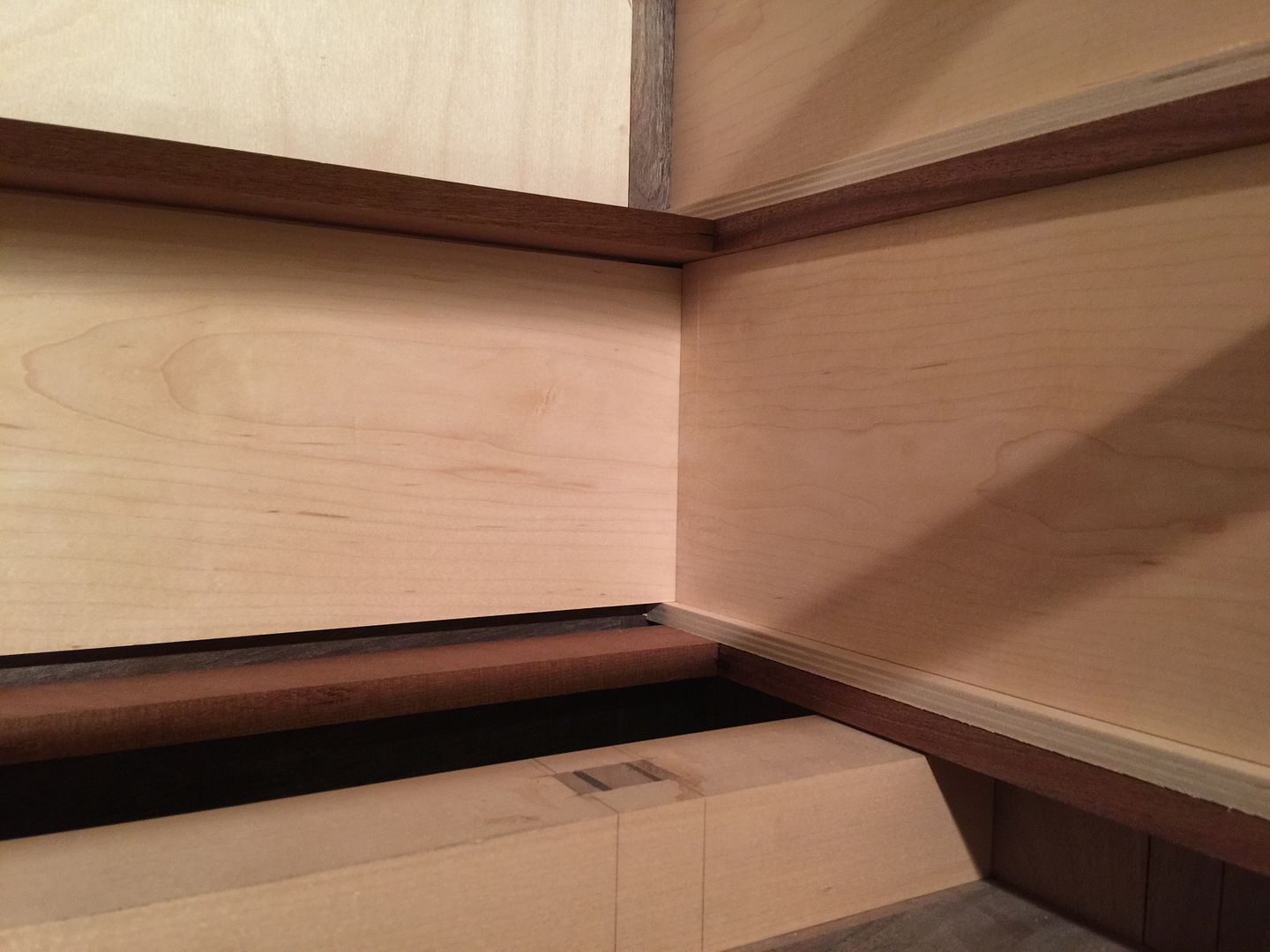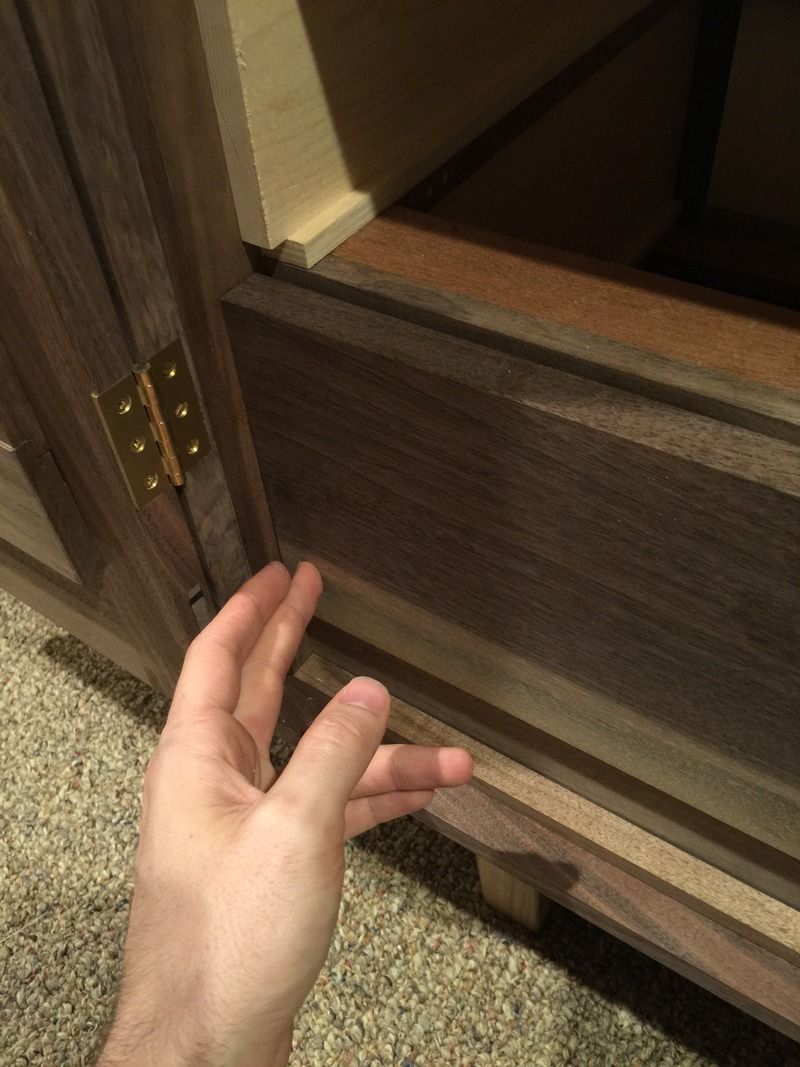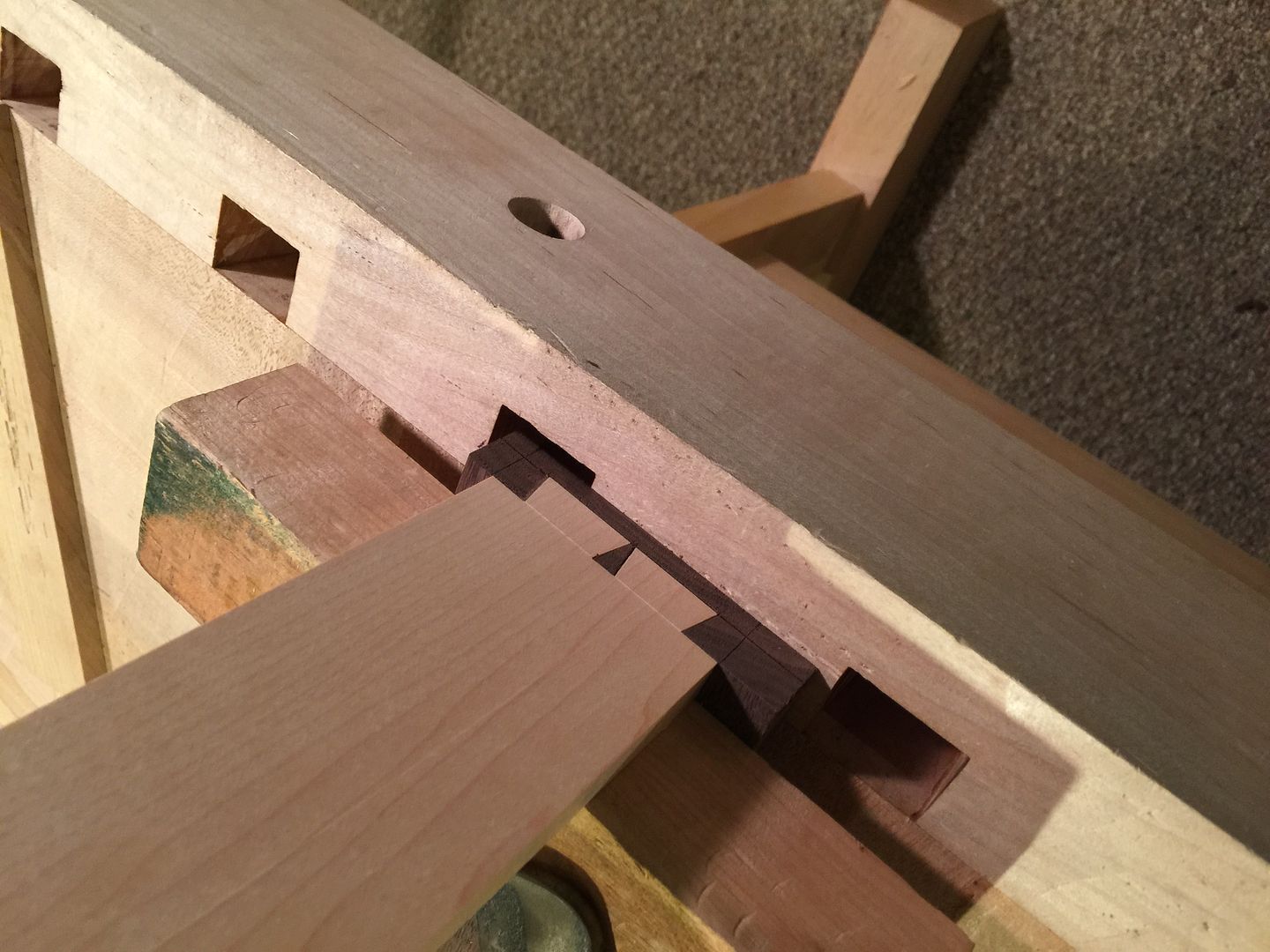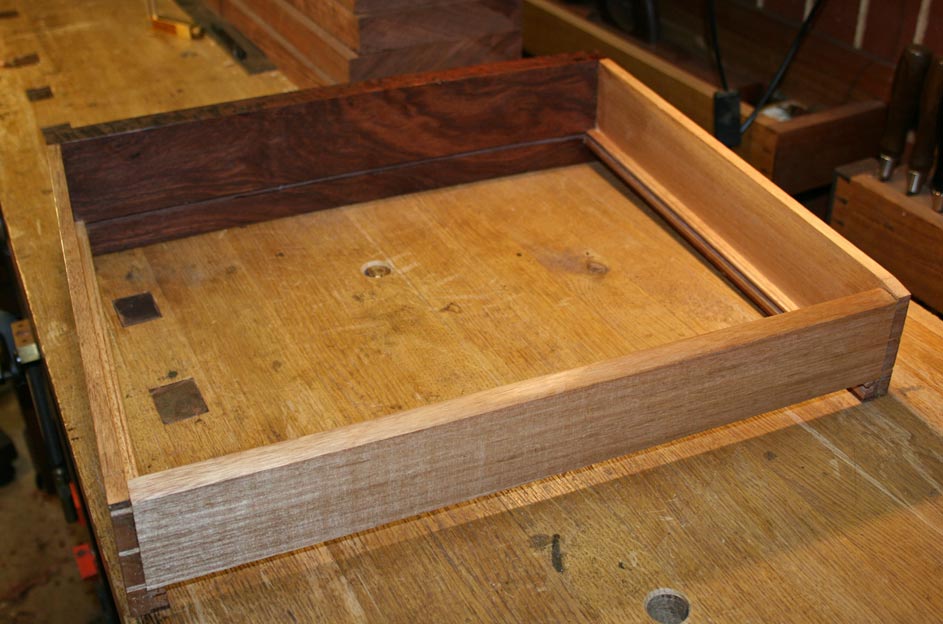Have you ever removed a drawer from a cabinet? It is natural to place a hand on the underside of the drawer. In the image on the right, ones hand would go through and create a mess.
The bottom of the drawer needs to float free to avoid problems when the wood moves. The wood will move so glue is not an option.
Another option would be to use a non rabbeted piece in the image on the left. then a piece could be placed on top of the slip to create a small secret compartment.
jtk
"A pessimist sees the difficulty in every opportunity; an optimist sees the opportunity in every difficulty."
- Sir Winston Churchill (1874-1965)







 Reply With Quote
Reply With Quote











 I missed that detail the first time.
I missed that detail the first time.
